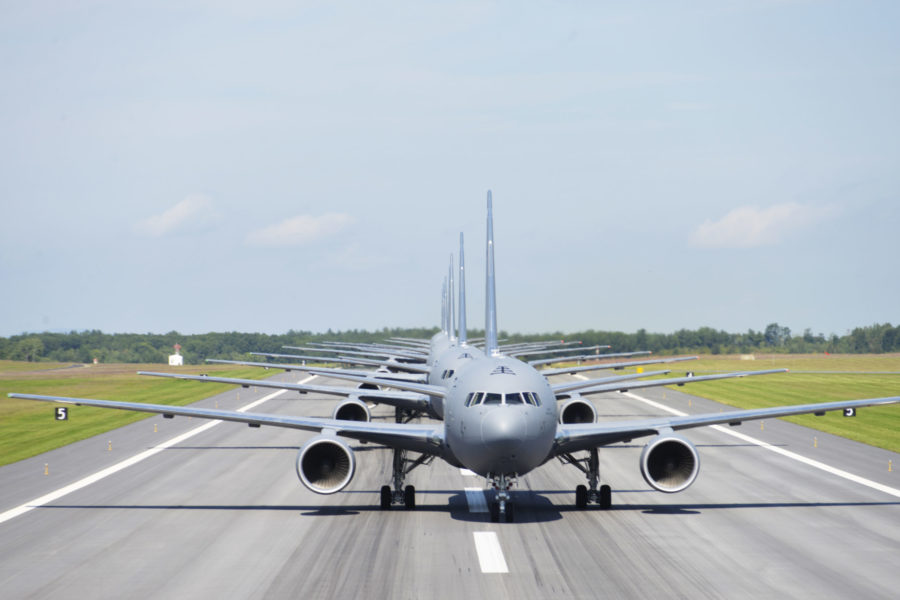Boeing’s losses on the KC-46 tanker program now amount to over $5.4 billion, after the company booked a $406 million charge against the program in its fourth quarter 2021 report, released Jan. 26.
It is the first Boeing charge on the KC-46 since the fourth quarter of 2020 when Boeing booked a $1.32 billion loss on the program, which brought cumulative losses on the Pegasus up to $5.037 billion at that point.
Boeing CEO David L. Calhoun, in a conference call with financial reporters, described the charge as due to “evolving customer requirements” on the KC-46. The Air Force is requiring Boeing to improve the performance of the tanker’s Remote Viewing System, which can create a distorted view of the situation at the back of the tanker for the boom operator, whose station is right behind the cockpit.
In addition to the RVS situation, the charge was driven by “factory and supply chain disruptions, including the impact of COVID-19,” a Boeing spokeswoman said after the earnings call. “While we continue to work closely with the Air Force on RVS 2.0, the KC-46 is currently successfully flying refueling missions with operators, having delivered more than 60 million pounds of fuel to a wide array of aircraft.”
Under the KC-46 fixed-price development program, Boeing is obligated to cover costs exceeding $4.9 billion, so program overruns now well exceed the company’s receipts on development.
Although a preliminary design review was expected to clear the new and improved RVS 2.0 to go forward in the fall, the Air Force recently said the system has not yet resolved deficiencies with the panoramic viewing system and the PDR remains “open.”
Air Mobility Command issued an “interim capability release” in December 2021 for more aircraft to refuel behind the KC-46. The new tanker is now certified to refuel nearly 70 percent of planned receiver aircraft.
“Despite the charge, which we don’t feel great about, by any respect, the tanker today is an incredible asset for our customer,” Calhoun said. “Our job is to continue to deliver the tanker and to do it more expeditiously as we move forward. The good news is, our customer likes the performance of the airplane, and again, we intend to serve that need.”
A Good Start for the T-7A
Calhoun said the Air Force T-7A trainer production line, “based on significantly improved development processes and modeling capabilities, is off to a very good start,” and “the efficiency associated with that process is being realized.”
Brian West, Boeing’s executive vice president and chief financial officer, said the company views the defense market generally as “stable” with bipartisan support for an increased defense budget. Despite the fact that “governments around the world are focused on COVID-19, security spending … remains a priority, given global threats.”
Company fourth quarter revenue “was $5.9 billion, down 14 percent,” West reported, “and operating margin was negative 4.4 percent. These results were driven primarily by lower volume and less favorable performance across the portfolio,” including the KC-46 charge.
West also noted that Boeing got a $7 billion order in the last quarter of 2021 to modernize Saudi Arabia’s E-3 AWACS aircraft. Boeing Defense System’s backlog now stands at $60 billion.
Accompanying documents also noted that Boeing is in flight test, along with Australia, of the “Loyal Wingman” unmanned aircraft, and has delivered the first KC-46 to Japan.
The documents show Boeing delivered 13 KC-46s in 2021, versus 14 in 2020, and delivered 16 F-15s to all customers—including international—versus four the year before. The U.S. Air Force has accepted two F-15EX Eagle II fighters, which are in concurrent developmental and operational test. The service plans to acquire 144 of the jets.
